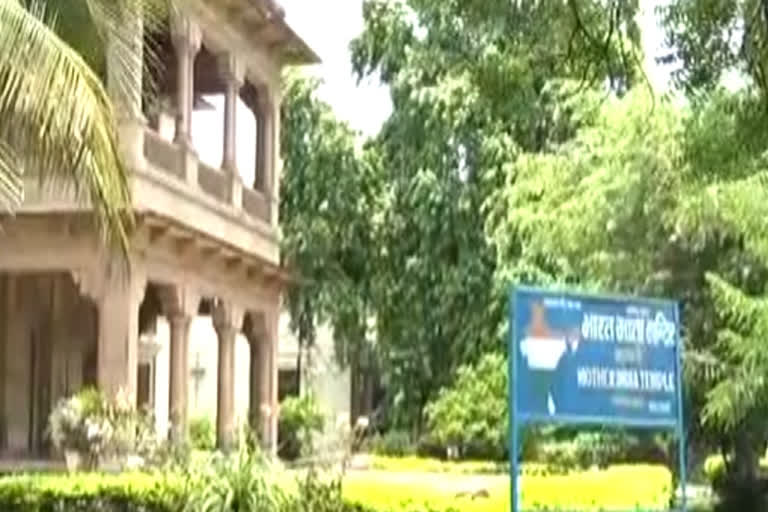Varanasi (Uttar Pradesh): As India Celebrates 75 years of independence, ETV Bharat is bringing together stories – told and untold - of India’s freedom struggle from across the nation. We often hear stories about men and women who fought to free India from the clutches of colonial forces and made it happen on 15th August 1947.
Like freedom fighters, several monuments also played an important role in India’s independence movement. One such monument is the ‘Bharat Mata Mandir’ in the ancient city of Varanasi, a popular pilgrimage centre, which attracts travellers from all over the world. The monument, located in the Mahatma Gandhi Kashi Vidyapeeth campus, is unique for the display of an indistinct marble map of un-divided India.
The rare map covers Afghanistan, Baluchistan, Pakistan, Bangladesh, Burma (now Myanmar) and Ceylon (now Sri Lanka) on a marble platform and is placed in the centre of the building. The building, a fine example of architectural grandeur, is unique for the use of red stone, Makrana marble and other construction materials and for its concept. In The temple city of Varanasi, this monument stands like a temple of resistance where you find no gods but freedom fighters, who strived for Independent India and who made the dream come true for millions of people.
British refused to open it in 1924
The construction of the temple started when the independence movement was moving into a new direction under the leadership of Mahatma Gandhi. To be precise, the construction started in 1917, two years’ after Gandhi’s return to India from South Africa to join Indian National Congress. When the mandir was completed in 1924, the British refused to open it for people as they feared this would accelerate freedom struggle.
Babu Shiv Prasad Gupta, a devoted freedom fighter hailing from a wealthy family, conceived the idea of the building and prepared the outline of the building and showed it to Mahatma Gandhi for approval. It took him 12 years to complete the building after getting approval from Mahatma Gandhi. Babu Shiv Prasad Gupta got this temple constructed by employing 25 craftsmen and 30 labourers under the supervision of Durga Prasad Khatri.
Mahatma Gandhi opens it in 1936
Finally, Mahatma Gandhi inaugurated the building on October 25, 1936. In spite of having a poor rail and road routes, more than 24,000 people attended the inauguration ceremony in 1924.
Bharat Mata Mandir has contributed a lot in the freedom struggle. It was here that the revolutionaries used to hold their meetings and make further strategies. It is said that revolutionaries like Chandrasekhar Azad used to hold meetings here. The caretaker of the building said that it was built to unite people of all religion living in India and incite nationalism within them.
Pictures of Mahatma Gandhi inaugurating the building that greet visitors in the Bharat Mata Mandir tells us back to those early days of freedom struggle.
Features of the map
A fascinating feature of the map is the detailed layout of the mountains and peaks, 450 specifics, plains, bodies of water, rivers, oceans and plains among other corpses forming this part of the earth and its dimensions and depth mentioned side by side.
Its surface land is shown 2000 feet in 1 inch. The length of the picture is 32 feet, 2 inches and the width is 30 feet 2 inches, which is divided into 762 blocks. Seeing a map carved on clay in an ashram of Pune, Shiv Prasad decided to make a map with marble for his Bharat Mata Mandir.
Though the monument fails to catch the attraction of the crowded city, it is a favourite among foreign tourists, who visit the city considered the heritage capital of the country.
So the next time you visit Varanasi, do not forget to visit this beautiful piece of architecture.



